Consumers trust in supermarket foods questioned
By Carol Richards
In his book, In Defense of Food, Michael Pollan advises “don’t eat anything your great-grandmother wouldn’t recognise as food” (Pollan 2008: 148). This warning mirrors public concerns relating to the over-processed, additive-laden foods commonly found on supermarket shelves and fast food outlets—and how food today scarcely resembles the food of the past. The global industrial food system, characterized by anonymous and long supply chains and a number of food scares along the way, has resulted in many people not trusting the food system to provide healthy, safe foods that are good for humans, animals and the environment.
Public awareness of the problems associated with modern food production has resulted in a growing level of concern amongst some consumers about the origins of food, resulting and a general distrust of industrial supply chain.
Globally, food scares such as mad cow disease in the UK and the “Jack in the Box” food scandal in the United States, in which children died from eating hamburgers contaminated with E. coli, have resulted in consumers neither taking food safety for granted. In China, revelations about the use of melamine to boost the laboratory protein readings of watered-down milk products have drawn attention to safety and quality shortfalls along the supply chain.
Other features often met with public distaste include the proliferation of “factory farming” and the use of veterinary pharmaceuticals such as growth hormones and feed grade antibiotics to support the “mass production” approach. Other food safety concerns have involved GM foods, with only a few jurisdictions (Canadian and European parliaments) currently considering mandatory labeling.
So far, food scares in Australia have been rare, however, the Garibaldi cooked-meats food scare in 1995, where one person died and others became sick after eating E-Coli contaminated salami, demonstrated we are also vulnerable. People often express concern about the long-term health, environmental and animal welfare effects of our own industrial food paradigm. Recently, a campaign by Animals Australia was successful (depending on your viewpoint) in halting live cattle exports to Indonesia for four months, and interest groups such as Gene Ethics, MADGE (mother’s are demystifying genetic engineering) and the Australian Food Sovereignty Alliance to name a few are have protested about the health, environmental and justice issues related to genetic engineering, and chemical and biological inputs into food such as pesticides and growth promotant hormones. The organic industry and backyard/community growing has also expanded in response to these concerns.
So what can be done to help us trust food again? As major players in food retail, supermarkets have considerable stake in assuring the quality and safety of the foods that they sell, particular as they control the majority of food sold to the Australian public. According to the Australian Consumer and Competition Commission (ACCC), Australia’s retail sector is heavily concentrated with Coles, Woolworths and the wholesaler, Metway (supplying smaller retailers such as IGA), holding a combined market share of some 70 percent Given their investment in food retail, a loss of trust following food scares could affect both the economic bottom line and the reputations of supermarkets.
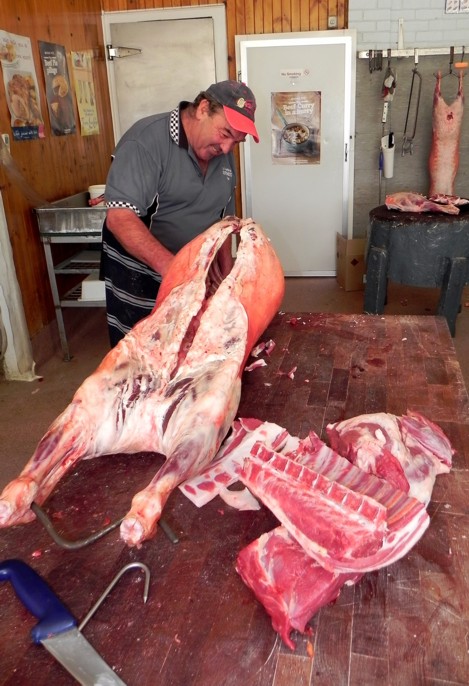
This concentration of food retail into a small number of major supermarket chains is a relatively new phenomenon. Following the production-focused remodeling of agricultural policy in line with the war effort in the 1940s, the modern model of distribution has largely replaced traditional food sourcing from local shops and markets. Traditional food acquisition was characterized by shorter supply chains, closer relationships between retailer and customer and a greater knowledge of the source and components of foods.
In the current global economy, relationships between farmers, retailers and customers are largely economic ones. Food eaters rarely know the farmers that produce their food. The very essence of supermarket trading involves anonymous relationships between the farmer, retailer and shopper/eater, with a high turnover of both products and staff. This format, coupled with distant and lengthy supply chains, is not well suited to the building and maintenance of relationships of trust.
So how do major retailers convince the public to trust the food they sell, particularly at the moment when there are alternative food systems through box schemes and urban agriculture springing up? These sources of “alternative” foods represent a more traditional aspect of food provisioning—where the provenance of the food is known—and the trust relations are built between the producer and the consumer within shorter, localized and therefore less anonymous food supply chains.
Private standards
Interestingly, what we are seeing in Australia and elsewhere is the rise of ‘private regulation’. That is, food regulation that is enacted by private corporations such as Coles and Woolworths, that imposes its ‘private standards’ on suppliers. These codes are often described as voluntary – but suppliers need to comply in order to supply supermarkets. This is significant given the dominance of the supermarkets, rendering the term ‘voluntary’ a moot point.
Given the loss of traditional knowledge regarding the source and origins of food, retailers are now in the business of ‘manufacturing trust’ and marketing it alongside other commodities. Food standards are largely concerned with safety, as well as other ‘credence claims’ relating to ‘organic’ ‘free range’ or ‘fair trade’. Perhaps more controversially, private proprietor standards are regularly used to ensure compliance with seemingly arbitrary criteria regarding the look, color or size of the product, something which has raised concerns over the wastage of food.
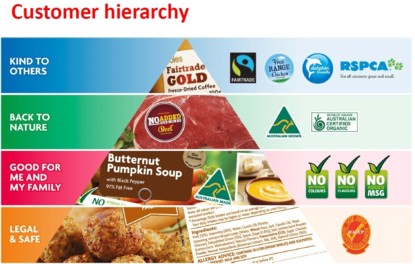
Private regulations come in many formats from the ‘big picture’ Global GAP—a proprietor-initiated, business to business protocol, world standard for ‘Good Agricultural Practice’ to supermarket-owned private standards, such as those owned by Woolworths, ‘Woolworths Quality Assurance’. Private standards are becoming particularly important for major supermarkets that are increasingly carrying their own brands. A food safety disaster has the potential to compromise not just a suspect product, but the whole supermarket chain.
While food safety can only be a good thing, the private standards are not without their problems. First and foremost, supermarkets are now in the business of governing others – particularly farmers and other suppliers. Disturbingly, corporate retailers have never been given a public mandate to govern, as is the case with democratically elected governments. Further, there have been many commissions of inquiry regarding supermarkets abusing their market power, not only in Australia, but in Norway, the UK, South Africa and many other countries where supermarket market share is overly concentrated.
Private standards are also used beyond food safety, as a point of market differentiation, with some lines carrying more claims than others, often above and beyond the baseline food safety standards required by the government. Whilst this may not seem problematic in itself, the main concern with many of these private standards is that supermarkets pass on standards compliance costs to producers and suppliers, representing a considerable cost burden to small-scale businesses. Indeed, there is much evidence contained in official inquiries and reports to suggest that many farmers are caught in an ‘arm lock’ with major supermarket chains, often selling at below the cost of production.
Producer standards
There have been some attempts to pre-empt the supermarket standard setting through producer-set standards. At the time of writing there are not many of these in existence. Perhaps the closest this type of standard is the Red Tractor owned by the supply chain in the UK – with farmers having a considerable stake in the enterprise. The Red Tractor kite mark can be seen on a number of single-ingredient products such as meat, fresh fruit and vegetables as well as multi-ingredient products such as salads and even beer.
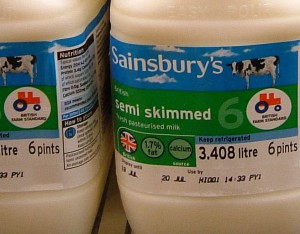
Products are audited by a third party and certified against a number of standards including good agricultural practice, animal health and welfare, animal feedstuffs, pesticide use and product traceability and integrity. Red Tractor differs from meta-governance schemes such as Global GAP—that assures the ease of movement of food products beyond nation-state boundaries—in that it is specifically a British scheme, certifying British produce. The subtext of this, as suggested by the Union Jack on the logo, is a flavor of “buy British” protectionism offering a two-fold reassurance to shoppers: certified quality assurance coupled with a “British is best” message.
Despite it’s flashy logo, Red Tractor’s standards are only baseline standards required by the government, but ‘branded’ to showcase and advertise the credentials of British Farming, while at the same time assuring the public that basic food safety, quality and agro-environmental standards have been met. The location of this regulatory function in the private sector but with government input, also reflects Britain’s “hollowed-out” state and responds to the public loss of trust in a government-led food safety program following the BSE crisis.
Red Tractor makes visible the audit and certification process through direct marketing. The small, toy-like, red tractor image itself has become a recognizable brand alongside the food manufacturer or retailer’s own brand. The red tractor graphic on the packaging does not speak of expert verification systems that are based on science; rather, it conveys a message of simple country life and traditional family farming. A depiction of a high-tech combine harvester or intensive dairy farm machinery might be a more accurate depiction of industrialised farming methods, but is less likely to convey positive brand identification and instill a sense familiarity and trust.
Would Australian producers benefit from their own set of private standards, or logo benchmark such as Red Tractor? Agricultural and pastoral operations in Australian do many public good environmental works on private land – and are rarely recognized or compensated. It has been suggested that a Landcare logo on Australian produce will demonstrate some of the good, ‘behind the scenes’ work which producers have been quietly getting on with for years. Whether a ‘good agriculture practice’ producer-driven certification would be useful is somewhat mixed, and depends upon what producer groups would like to achieve by taking such steps.
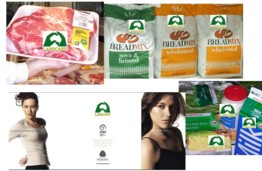
Given the supermarket duopoly’s stranglehold on Australian producers at the present time, it is unlikely that supermarkets would be prepared to either pay a premium for ‘Landcare certified products’, or even pass on a premium for which customers might be prepared to pay. In terms of awareness raising, it might be a helpful move, however research has shown that when consumers purchase organic products – it is generally for health reasons first and environmental reasons second. Consumers ‘willingness to pay’ for products with high environmental credence claims would require some investigation, as would the cost burden in setting up such a scheme.
To conclude, private standards and credence claims are about food safety, but also securing consumer trust in often anonymous, industrial food systems. Perhaps the best bridge between consumers and farmers, are direct marketing schemes such as farmers’ markets, box schemes, community supported agriculture and so on. These schemes have the potential to by-pass the major ‘middle-men’, in this case, the major supermarket chains who have exerted considerable power over farmers in recent years and do away with the need to ‘manufacture trust’.
Trust building became necessary due to the loss of trust in long, anonymous supply chains. A Landcare certification may offer more of the same, but would serve to raise awareness of the public-good environmental works conducted by farmers that often goes unrecognized. What might be the most pressing mission for farming is to work with civil society, food eaters, to release the supermarket grip on both parties. In this scenario, trustful relations may be built, and direct marketing allowing the profits from farming to stay with the grower, rather than the supermarket ‘middle men’.
For those with access to direct marketing – ie, farmers close to urban settlements who have an outlet for their produce, trust in the food system may be rebuilt without the need for private standards and complex private regulatory standards. There are many examples of this presenting a positive step forward, providing eaters with direct links to farmers and vice versa, and new opportunities to learn how the environment is cared for and how the food is grown, and, ultimately, offering farmers the fair livelihoods they deserve.
Find out more:
Dr Carol Richards, Australian Research Council Postdoctoral Fellow, School of Social Science, The University of Queensland, http://socialscience.uq.edu.au/carol-richards ; Committee member: Australian Food Sovereignty Alliance
http://www.australianfoodsovereigntyalliance.org/Convenor: Australasian Agrifood Research Network http://www.afrn.org.au/ A more in-depth paper on this topic has been published by the author.
Food marketing practicalities
Comments from Patrick Francis
While Carol’s arguments about why farmers and consumers may have reservations about trusting supermarkets are sound, for the majority of Australia farmers – the broadacre grain and livestock producers, alternative avenues for marketing food are practically non-existent.
There are three reasons: the majority of these farmers produce foods who consumer markets are equally distributed between domestic and export destinations. It means processors who have involvement with both domestic and export markets can derive the best value for each unit of product purchased eg lamb/beef carcase, litre of milk or tonne of wheat. Secondly the majority of consumers live on coastal fringes usually hundreds of kilometers from higher value fresh food farmers. And thirdly, the number of consumers categorized as “foodies” who attach credence values to direct marketed foods is small and only profitably support a limited number of direct farmer market businesses.
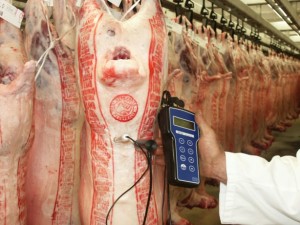
On the latter point it could be argued for some foods like organic meats, milk products and grains, organic production and distribution is becoming more ‘industrialised’ like similar conventional foods. For instance, the number of organic meat processors is small, so livestock need to be transported long-distances for processing, while the meat is transported long-distances to retailers. One of Australia’s largest organic meat paddock-to-plate companies exports the majority of its products.
There is a fourth issue which has dogged small scale food businesses for years, that is, their ability to compete against larger players on food safety, quality and price. In virtually every consumer survey conducted about food desirability, top of the list are these three characteristics. So the local farmers markets retailers need to provide these to remain competitive just as much as Coles or Woolworths. Small businesses can ensure these characteristics but often the regulations associated with doing so are too onerous and expensive leading to supply failures and/or consumer dissatisfaction. The beef cattle industry has a long history of local beef processing and brand startups, and subsequent business failures.
Eating local can be a two edged sword – it can support local businesses and mean more environmentally credentialed food that is fairly priced for the farmer, but it also can mean lower quality, higher prices and unavailability at particular times of the year. Classic examples of difficulties involved with maintaining ‘local’ food businesses are the demise of small town abattoirs, milk processors and flour mills in south eastern Australia.
A glimmer of hope with supermarkets
The two major supermarket chains should be recognised for introducing some private standards which support credence values for some farmers and consumers. There is a common misconception that farmers themselves don’t attach credence values to the livestock they breed and grow. In fact, many support higher standards of animal welfare, meat quality and environmental credentials for their livestock and farms than is currently acceptable. It’s why many prefer not to use Hormone Growth Promotants, prefer to finish sheep and beef cattle on pasture rather than grain, prefer to select Merino sheep for skin and wool characteristics which means mulesing is not necessary, prefer to rotationally graze pastures and maintain a high level of ground cover than set stock them, plant habitat corridors for livestock welfare and biodiversity improvement, prefer to consign livestock direct to abattoirs than send them to sale yards, and will not sell to buyers who forward live animals to overseas destinations.
Similarly many grain farmers prefer not to plant GM canola, prefer to retain stubble than plough it in or burn it, and use a combination of organic and inorganic fertilisers to meet crop nutrient needs. While most of these farm management and input characteristics are associated with organic brands they are also adopted by many non-organic farmers.
Some of these initiatives are starting to be rewarded by supermarkets both passively and financially, but the latter is limited. Passive reward comes in the form of market recognition and demand. Financial reward means a higher price is paid for a particular outcome.
For instance, Woolworths now has a MSA (Meat Standards Australia) graded beef and lamb on its shelves – beef carcases grading MSA receive a 10 – 20 cents per kg premium from processors (Moffitts Farm is a MSA registered producers and have been receiving this premium for two years for its grass finished steers – it’s a small financial incentive based around improved on-farm livestock handling, transport and post-slaughter procedures). MSA is a win for consumers as beef tenderness is guaranteed and is a win for farmers.
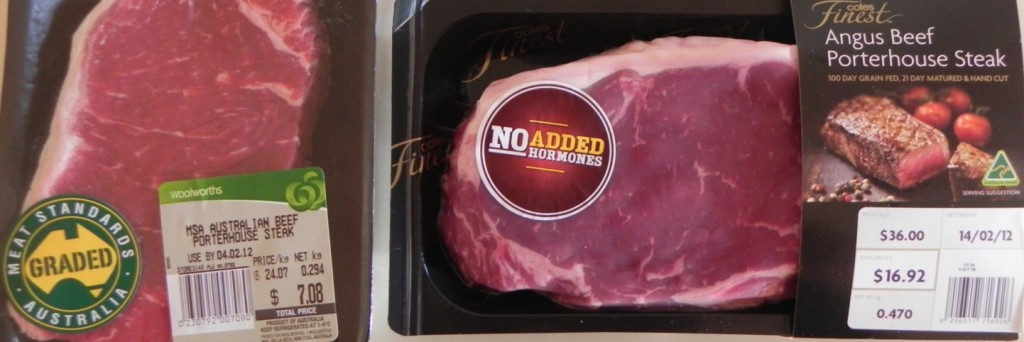
Coles No HGP beef is a passive signal for farmers as it provides direct support for not using these hormones and provides an alternative market access point. It is also a positive signal to consumers that there are many beef cattle producers who grow their cattle without resorting to growth promotants. Similarly Coles stocks King Island brand beef which is produced off pasture without HGPs. Coles also stock, RSPCA certified free range chicken, Otway pork (free range) and recently began selling fresh pork from producers who do not use sow stalls (this is not the case for imported manufactured pork products). The ultimate continuation of these initiatives by Coles depends on consumer recognition of the credence values embraced and their purchasing support.
It would be interesting to find out how important Coles and Woolworths are to certified organic food sales?
As for my suggestion about a landcare logo on food, the concept is more about developing trust between farmers and consumers along the lines of the LEAF scheme in the UK. I don’t believe that a set of environmental, animal welfare and quality standards require a premium price for supplying them, rather they become the entry point for greater market access and possibly in-time greater market demand. The incentive for farmers entering such arrangements should come from governments (in one form or another, eg stewardship payments or tax incentives) for adopting particular standards. As an example incentives paid could be paid for through the Carbon Farming Initiative if it took a holistic approach to whole farm carbon balance trends. The improved ecosystem services generated from farmers adopting a set of voluntary, ongoing practices would be considerable across the entire community. The irony is the majority of farmers are already involved in such practices through landcare, self-education, and to a great extent via the practicality of achieving profitability under the on-going cost/price squeeze inherent in agriculture.
It is interesting that Woolworths is a national sponsor of Landcare Australia Ltd, it uses that sponsorship for PR and contributes some dollars to on-farm projects each year. It is difficult to understand why the company doesn’t take the step towards provision of ecosystem services improvement and encourage greater adoption of voluntary EMS programs run by landcare networks. The EMS programs have been written and trialed by landcare and commodity groups but adoption is low as there is no on-going flow through market support.
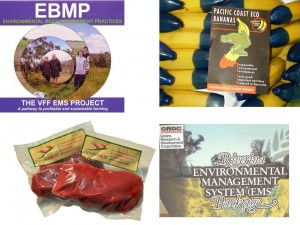
“Direct marketing schemes such as farmers’ markets, box schemes, community supported agriculture” would benefit from both food quality eg MSA for meats, and environmental quality assurance such as voluntary landcare EMS. Certified organic has a strong consumer following because it is a trusted system. Accredited landcare farming has an opportunity to follow suit if the will is there to move it from a mostly stop-start, reactionary environmental program into proactive permanent one with consumer support.



